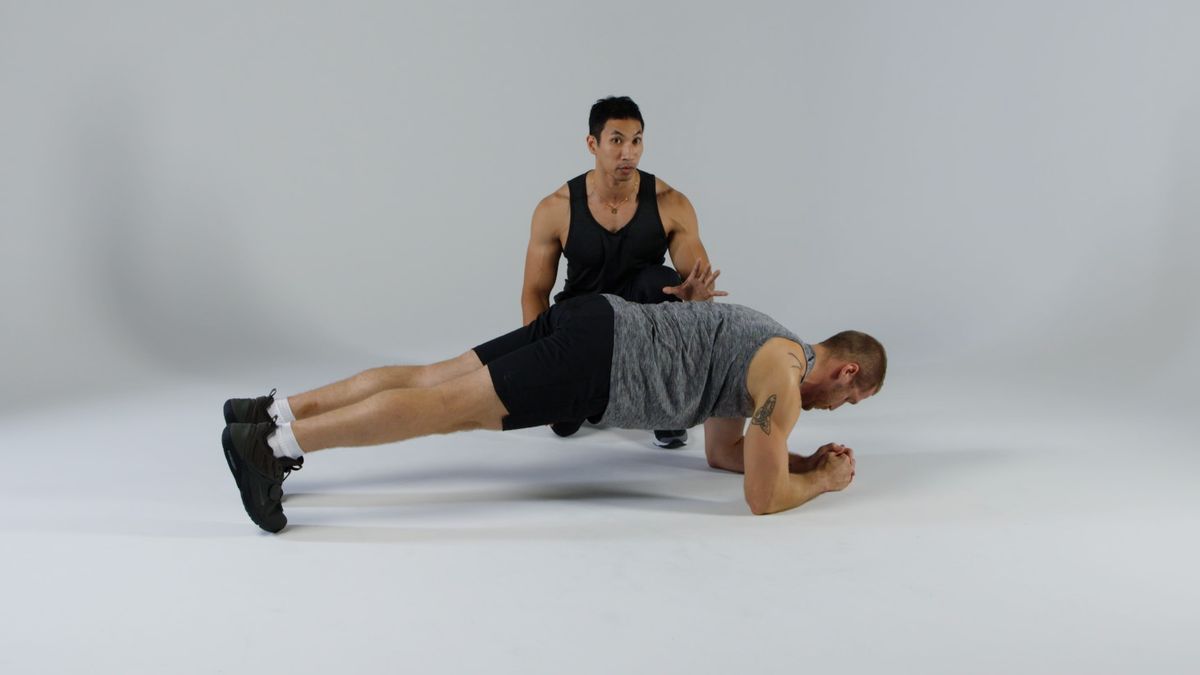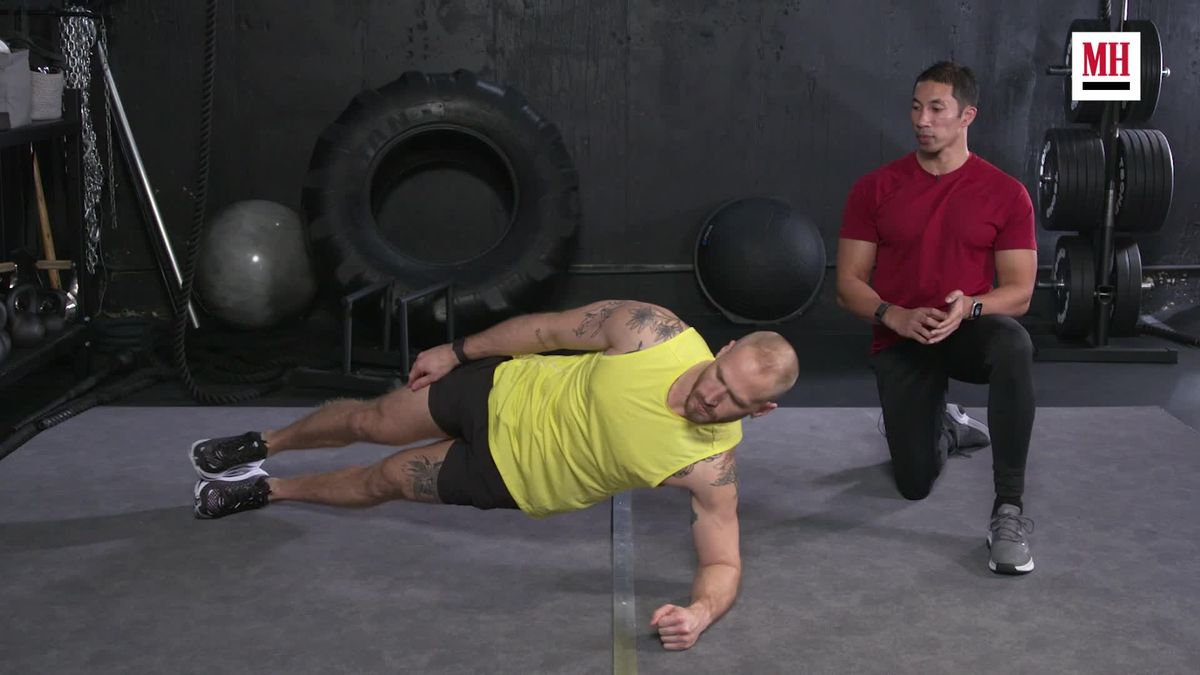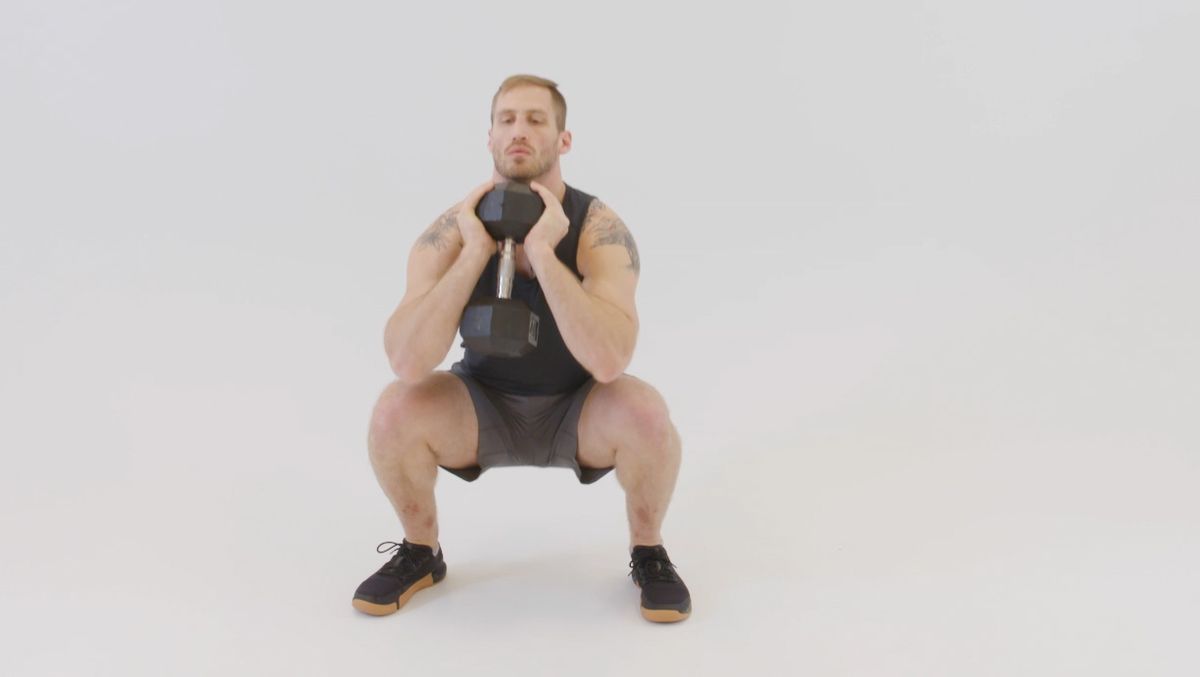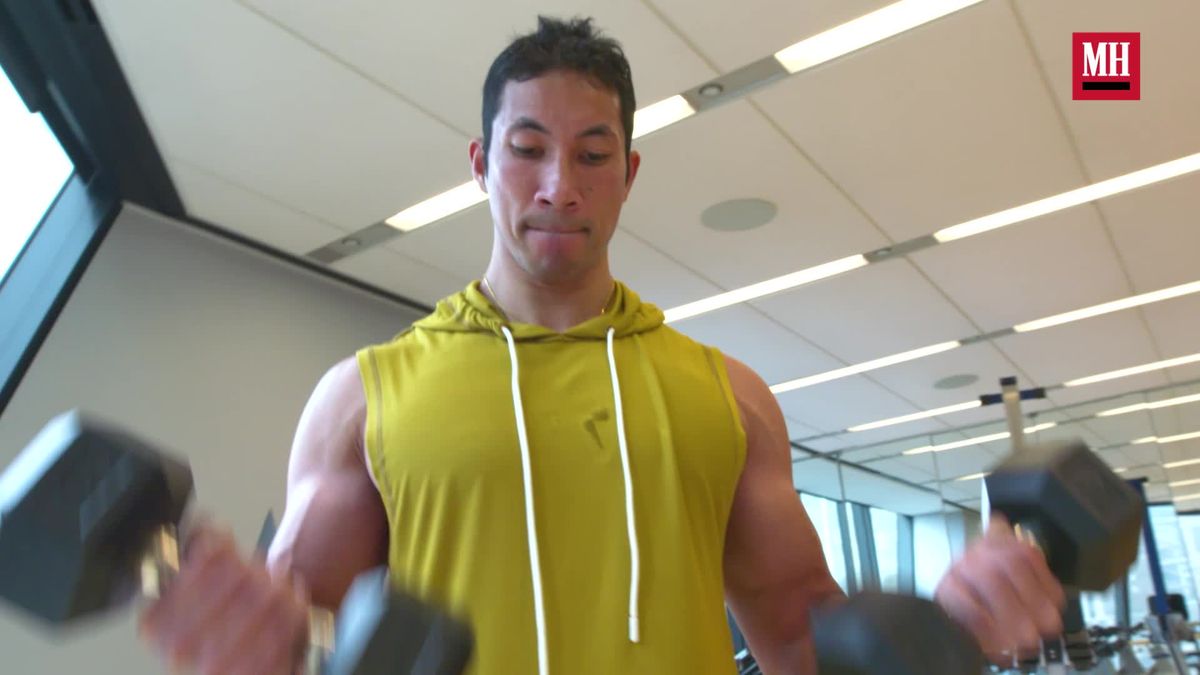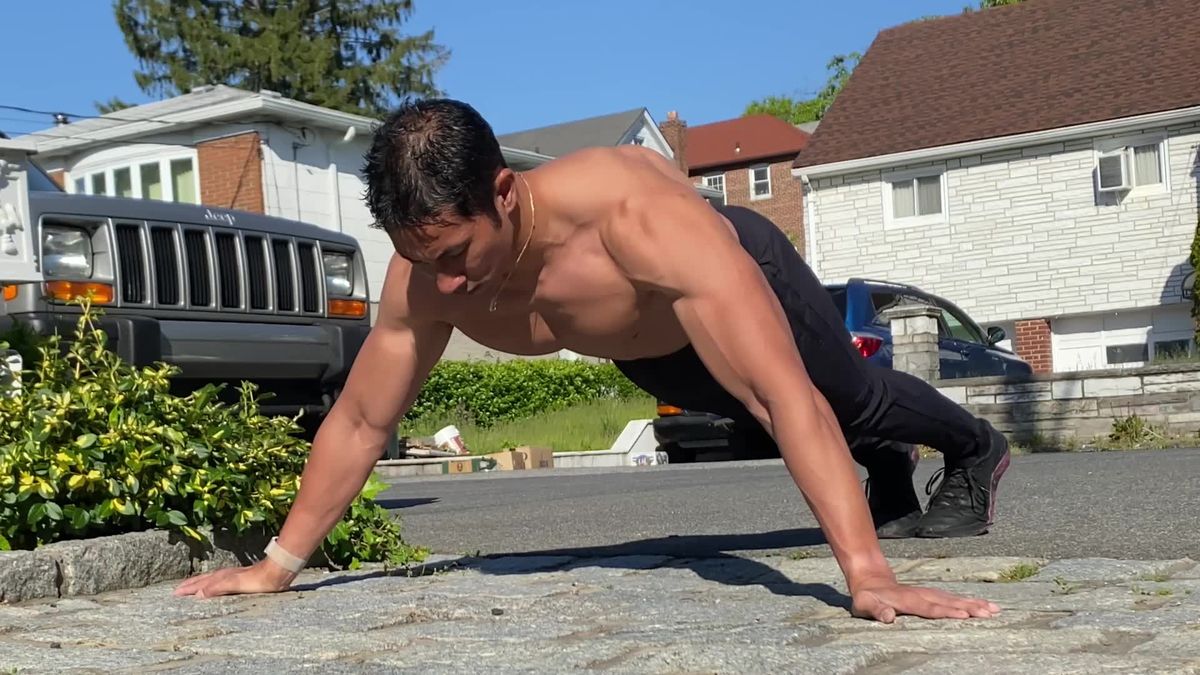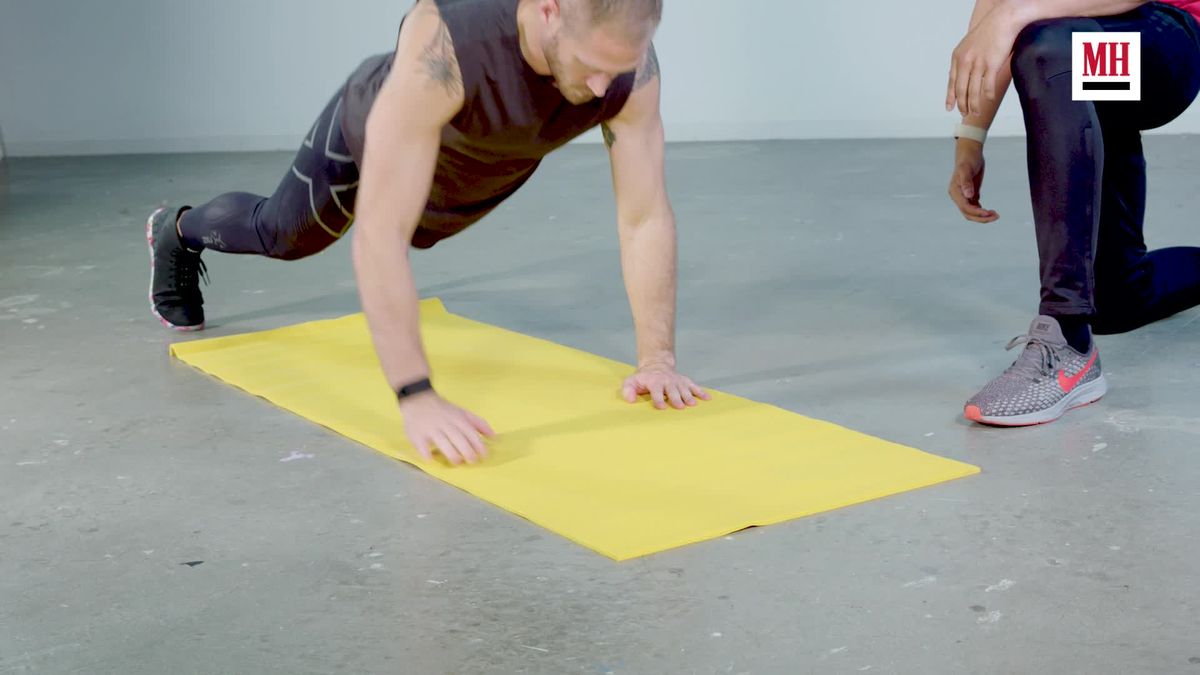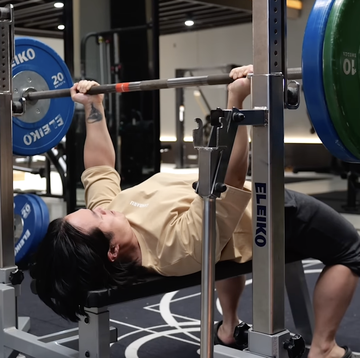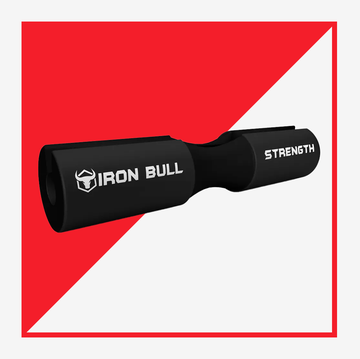IF YOU'VE BEEN to the gym recently, you might have noticed some guys stopping and holding in the middle of their biceps curl or back squat. These pauses aren't just to show off strength and control—they're called isometrics, and incorporating them into your workout routine can help you make some serious gains.
Isometrics focus on pausing and holding a specific portion of a movement. It's one of the three types of muscle contractions (eccentric, concentric, and isometric)—and it’s often the contraction you’re most likely to forget about. You know concentric muscle contractions well. These occur when the force your muscles produce outdoes the force of the load you’re lifting, leading you to lift and leading the targeted muscles to shorten. Eccentric muscle contractions occur as you lower that load; your muscles are lengthening because they’re generating less force than the external load.
The isometric contraction occurs when the force your muscles create is equal to the force of your external load. When this happens, your muscles create force while neither lengthening nor shortening.
For maximum gains, you want to utilize all three contractions within your training. But most standard gym exercises (think deadlifts or biceps curls or pushups) require you to focus on just two contraction types: eccentric and concentric. Finding ways to incorporate isometric holds into your training, though, can help you build serious strength.
Whether you’re a beginner or a seasoned lifter, these stationary exercises can help you build mind-muscle connection, and, especially if you pause during an ultra-challenging point of an exercise (think: the bottom of a squat), you’re teaching your body to be resilient during a portion of the exercise that you might want to rush through. Studies show that holds can increase strength and reduce fatigue.
Here's how isometric exercises can benefit you, and how you can incorporate them into your next gym session.
What Are Isometric Exercises?
If you've ever done an exercise that involves holding a certain position for some period of time, you've done an isometric exercise. Isometric exercises generally fall into two categories.
The most common examples are bodyweight moves you’ve likely done, like planks and wall sits. During these exercises, you’re creating force without your muscles changing length—but there is no external load.
More advanced lifters will do isometric holds with external load, as you do if you hold the midpoint of a biceps curl, or the bottom of a squat. There are multiple reasons to do this. Chief among them: Since your muscles don’t need to change length, they’re extra-strong, which allows you to subject your body to greater loads than you could if you were doing, say, a standard biceps curl.
"Isometric literally means 'same length'. It's basically a static hold typically performed in training at a harder position, [like] the mid-point of a squat as opposed to the top of the squat," says Alwyn Cosgrove, C.S.C.S., Men's Health advisor and owner of Results Fitness.
What Are Isometric Exercises Good For?
Building Beginner Movement Patterns
Incorporating isometrics is a great way for beginners to learn positioning, says Cosgrove. Establishing familiarity with the point of highest tension of an exercise can help someone new to lifting understand the feel of a muscle contraction—making them great to develop a strong mind-muscle connection. A healthy strength base can be established through isometrics, as they help promote joint and muscle stability, benefitting you further by reducing injury risk.
Progressing Through a Sticking Point
The "sticking point" of an exercise is when you feel like the movement is at its heaviest. In a squat, for example, that's when you've descended to the point that your knees are at about 90 degrees. If you're struggling to progress through that point when you're trying to increase load, using an isometric hold may help you break through that barrier.
Isometric strength gains, according to the research, over about 15 degrees each direction of the held joint angle. Sticking with the squat hold example, that means you'll see better strength 15 degrees north and south of that 90 degree bend in your knees. "So, isometrics can be useful to work through the sticking point," Alwyn says.
Rehabbing Injury
If you're trying to bounce back from an injury, isometrics may become your best friend. They're often the first step in rehabilitation if you go see a physical therapist. Especially with joint injuries, isometrics are utilized to maintain muscle mass and aid in joint stabilization without having to move through pain in the joints.
Gaining Strength
Incorporating isometric sets into your workouts will help you gain strength, Cosgrove says.
Strength and size are two different things, though. Isometrics may help you increase muscular strength, but they haven't been found to improve hypertrophy (muscle growth), says Mike Boyle, strength coach and MH Advisor, says. So, if your only goal is to pack on muscle mass, you shouldn't depend on isometrics.
How to Incorporate Isometrics Into Your Workouts
There are two ways to incorporate isometrics into your workouts. The first involves exercises in which you hold a position for an extended period of time, like a plank or a wall sit. There's no research on exactly how long these hold should be, but it's safe to aim for about three sets of 30 seconds, says Ebenezer Samuel, C.S.C.S, MH fitness director. Depending on your fitness level, you may be able to increase that time. "When unable to hold the position, [you've] obviously held too long," Cosgrove says.
If you're a beginner in the gym, start with this approach. They don't add external load, and are great for building basic strength and stabilization.
The second approach involves exercises that have you pausing at the highest point of tension in the rep for three to five seconds. Trainers love these holds, in part because they help gym beginners develop mind-muscle connection and perfect a portion of a challenging lift. You can pair these brief holds with standard reps too. Think of starting a set of biceps curls with a three to five second hold with your forearms parallel to the ground, then immediately follow with eight to 10 full range of motion biceps curl reps. Do three to four sets like this.
10 Isometric Exercises to Add to Your Routine
If you're looking to test out some isometrics the next time you're in the gym, give these a go.
Hollow Body Hold
Your ab circuit is a great place to add in some isometric movements. The hollow body hold forces you to keep your abs squeezed tight to prevent your lower back from popping up off the floor.
How to Do It:
- Lie down on the ground with your arms by your sides. Press your low back into the floor by squeezing your abs.
- Lift the heels up to about 3 inches off the floor. Extend the arms up and lift the shoulder blades about 1 inch off the ground.
- Continue to squeeze the core so the lower back stays tight against the ground. Try to hold for about 30 seconds, for 3 sets.
Wall Sits
If you're looking for a brutal leg day finisher, give wall sits a go.
How to Do It:
- Place your back against a wall, and 'sit' yourself down to where your knees and hips are both at 90 degrees.
- Squeeze your abs tight to make sure your back is firmly pressed into the wall. Try to hold for about 30 seconds, for 3 sets.
Planks
It's a staple for a reason. The plank is an effective full-body exercise (and there are tons of variations, so you can never get bored).
How to Do It:
- Start on the ground with your elbows placed directly beneath your shoulders. Extend your legs out and place your weight on your elbows and your toes
- Squeeze your abs and glutes to create a line from your heels to your shoulder blades.
- Maintain a neutral neck position. Try to hold for about 30 seconds. Repeat for 3 sets.
Side Planks
Speaking of planks—side planks shouldn't be overshadowed by their parent exercise. Add these into your ab circuit to put some tension on the obliques.
How to Do It:
- Lie on your side, and place your elbow under your shoulder, keeping the elbow facing forward. Stack your feet on top of each other
- Squeeze your abs and glutes to pull your hips up off the ground, placing your weight on your elbow and your feet.
- Lift your free arm towards the ceiling, and squeeze your shoulder blades together to keep your spine flat. Try to hold for about 30 seconds, for 3 sets on each side.
Goblet Squat Holds
If you're ready to level up your isometrics, add in a little bit of weight at a time with the goblet squat hold. This is where we start incorporating shorter pause holds at the most difficult part of the rep.
How to Do It:
- Grab a kettlebell or dumbbell. Hold it up to your chest, keeping the elbows high.
- Sink down and back like you're sitting into a chair, keeping your weight spread evenly across your foot. Hold at the point where your thigh is parallel with the ground.
- Make sure that the weight doesn't pull you forward and cause your upper back to round out. Don't allow your elbows to rest on your knees—keep them forward.
- Do 3 sets of 10 reps, holding the bottom position for 3 to 5 seconds each time.
Split Squat Holds
Incorporating unilateral exercises helps your body gain balance and strength for other collective movements. Split squats are a great place to perfect unilateral training of the legs, especially if you're a beginner. If you're just starting out with split squats, try a few isometric holds to really grasp what the quad and glute squeeze feel like at the bottom of this movement.
How to Do It:
- Start in the bottom position to find a 90 degree angle in both knees, and lean forward just slightly.
- Return to standing, and make sure your feet at next to each other rather than in the straight line—think railroad tracks.
- Lower slowly, and hold to where both knees are at 90. Do 3 sets of 10 reps, holding the bottom position for 3 to 5 seconds each time.
Biceps Curl Holds
Looking to build Thor-level biceps? Add in some isometrics to your classic biceps workout. Here, isometrics are sprinkled in to get a little extra burn to really take your biceps to failure.
How to Do It:
- Grab some dumbbells. Start in a good athletic stance—feet hip-width apart, shoulder blades down and back.
- Curl the dumbbells up to where there's a 90 degree bend in your elbows. Hold here, keeping the elbows tucked in tight along the ribcage.
- Do 3 sets of 10 reps, holding the bottom position for 3 to 5 seconds each time.
Archer Pushup Holds
Isometrics aren't just for beginners—utilize them to strengthen more challenging movements that you're trying to perfect, like this archer push up.
How to Do It:
- Start in a high plank position with your hands planted a few inches wider then shoulder width apart. Face your fingers out to the sides.
- Slowly lower down towards one side, keeping the other arm straight.
- Hold when your chest is about an inch from the ground for a serious pec-pump. Do 3 sets of 10 reps, holding this position for 3 to 5 seconds each time.
Superman Hold
Isometrics can be incorporated anywhere—even in your warm up. The superman hold exercise is an excellent one to place at the top of any workout. It wakes up a ton of muscles, including the glutes and lats by firing up the posterior chain.
How to Do It:
- Lie on your stomach, with your arms in front and your legs behind you.
- Tighten your glutes, raising your legs up off the ground. Squeeze between your shoulder blades, raising your arms up off the ground.
- Look at the ground to keep a neutral neck position. Do 3 sets of 10 reps, holding this position for 3 to 5 seconds each time.
Incline Pause Row
If you're looking for a way to incorporate isometrics into your back day, give the incline row a pause at the top for a strong finish. "This isn't the kind of move you lead off a workout with, but it's a perfect move to drop into the end game, as a third or fourth exercise that finishes off your mid-back," says Samuel.
How to Do It:
- Set up a bench on an incline. Lay on it with your chest pressed against the top of the bench with your legs extended behind to keep you propped up.
- Squeeze your shoulder blades together to pull both dumbbells up. Pause here for 3-5 seconds for 10 reps. Do this for 3 sets.
Cori Ritchey, NASM-CPT is an Associate Health & Fitness Editor at Men's Health and a certified personal trainer and group fitness instructor. You can find more of her work in HealthCentral, Livestrong, Self, and others.
Brett Williams, a fitness editor at Men's Health, is a NASM-CPT certified trainer and former pro football player and tech reporter who splits his workout time between strength and conditioning training, martial arts, and running. You can find his work elsewhere at Mashable, Thrillist, and other outlets.





